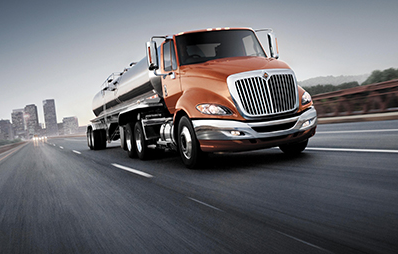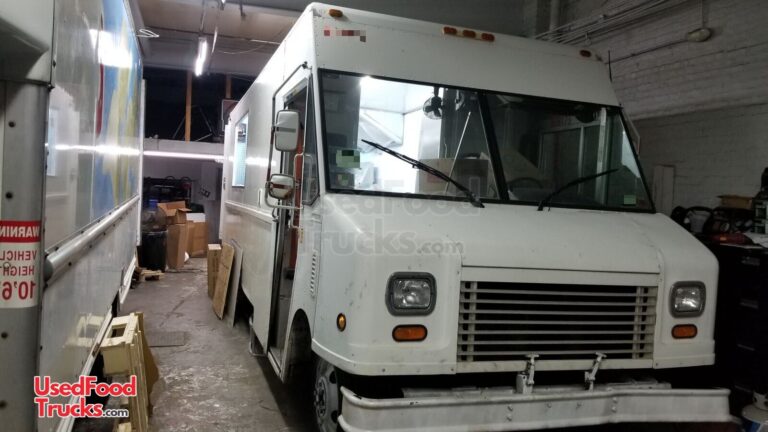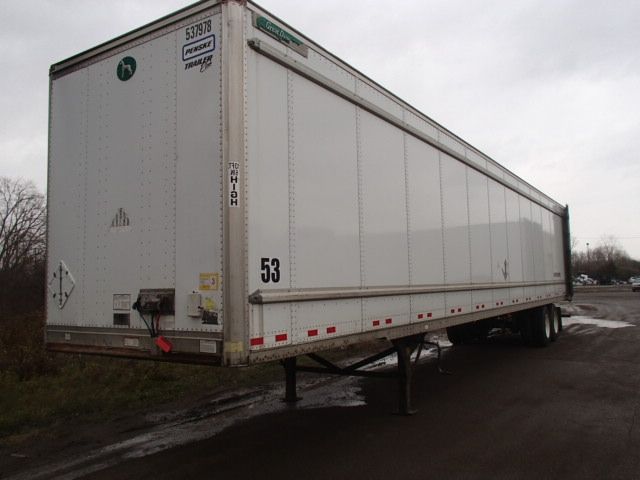26 Foot Box Truck Height Of The Deck: A Comprehensive Guide to Understanding and Managing This Crucial Dimension
26 Foot Box Truck Height Of The Deck: A Comprehensive Guide to Understanding and Managing This Crucial Dimension cars.truckstrend.com
In the world of logistics, transportation, and moving, the 26-foot box truck is a ubiquitous workhorse. From commercial deliveries to residential relocations, its size offers a versatile balance between capacity and maneuverability. However, one dimension often overlooked, yet critically important, is the height of the truck’s deck – the floor of the cargo area. This seemingly simple measurement can dictate everything from the efficiency of loading and unloading to the safety of operations and even the routes a truck can take.
Understanding the 26-foot box truck’s deck height is not just about a number; it’s about operational planning, equipment compatibility, and preventing costly delays or accidents. This comprehensive guide will delve into every aspect of this vital specification, providing insights, practical advice, and solutions for anyone involved with these essential vehicles.
26 Foot Box Truck Height Of The Deck: A Comprehensive Guide to Understanding and Managing This Crucial Dimension
Understanding the "Deck Height": More Than Just a Measurement
The deck height of a 26-foot box truck refers to the vertical distance from the ground to the top surface of the truck’s cargo floor. This is the level at which goods are loaded onto or unloaded from the truck. While the overall dimensions of a 26-foot box truck (length, width, and total height) are often standardized for classification, the deck height can vary significantly based on several factors, making it a critical consideration for specific tasks.
This measurement is paramount because it directly impacts:
- Loading and Unloading Efficiency: Whether the truck can align with a loading dock, or if a ramp or lift gate is required.
- Equipment Compatibility: The type of forklift, pallet jack, or hand truck that can be used.
- Overhead Clearance: While not the truck’s total height, an unusually high deck can indirectly affect ramp angles or require more vertical space during loading.
- Safety: Improper deck height alignment can lead to dangerous gaps, unstable ramps, or tip-overs.

Average Deck Heights for 26-Foot Box Trucks
While there’s no single universal standard, 26-foot box trucks typically have a deck height ranging from 44 inches to 52 inches (approximately 3.6 to 4.3 feet) when empty. This range can fluctuate due to:
- Standard vs. Low-Profile Design: Some manufacturers offer "low-profile" chassis designed specifically for easier loading, which might feature smaller tires or a different suspension setup, resulting in a deck height closer to the lower end of the spectrum (e.g., 40-42 inches).
- Suspension Type: Air-ride suspensions can sometimes offer a limited range of height adjustability, allowing the driver to slightly raise or lower the deck for better alignment with a dock. Standard spring suspensions offer fixed heights.
- Tire Size: Larger diameter tires will naturally raise the vehicle’s ground clearance and, consequently, the deck height.
- Manufacturer and Model: Different truck manufacturers (e.g., Isuzu, Hino, Freightliner, Ford, GMC) design their chassis with varying specifications.

It’s crucial to remember that the deck height will decrease when the truck is loaded due to the compression of the suspension. A fully loaded truck might sit a few inches lower than an empty one, a factor often overlooked but vital for precise planning.

The Critical Importance of Knowing Your Deck Height
Understanding the precise deck height of your 26-foot box truck is not just a technical detail; it’s an operational necessity.
1. Loading and Unloading Efficiency & Dock Compatibility
The most common reason for needing to know deck height is its interaction with loading docks. Standard loading docks are typically around 48-52 inches high.
- Perfect Match: When the truck’s deck height aligns perfectly with the dock, goods can be moved directly across using a pallet jack or forklift, minimizing effort and maximizing speed.
- Too High: If the truck’s deck is higher than the dock, it creates an uphill slope, making it difficult or impossible to use standard equipment. This often requires specialized ramps or dock levelers.
- Too Low: If the truck’s deck is lower than the dock, it creates a downhill slope into the truck, which can be challenging for heavy loads and poses a risk of equipment getting stuck or tipping. Dock plates or levelers are essential here.
2. Equipment Compatibility
The deck height dictates the type of material handling equipment that can be safely and effectively used.
- Forklifts: Require a relatively flat surface for entry and exit.
- Pallet Jacks: Need a smooth, minimal incline.
- Hand Trucks/Dollies: Can manage slight inclines but become hazardous on steep ones.
- Ramps: The length and angle of a ramp are directly determined by the height difference between the ground/dock and the truck’s deck. A higher deck requires a longer ramp for a safe incline.
3. Clearance Issues (Indirectly)
While deck height isn’t the total vehicle height, it affects the approach angle to ramps or the use of specific lift gates. More importantly, understanding deck height helps in selecting the right truck for locations with known access limitations. If a receiving bay has a very low overhead door, a truck with an unusually high deck (and thus potentially a higher overall profile) might be problematic, or the angle required to get onto a ramp might cause the top of the truck to strike the doorframe.
4. Safety Considerations
Misjudging deck height can lead to severe safety hazards:
- Falls and Injuries: Gaps between the truck and dock, or unstable ramps, are primary causes of falls.
- Equipment Damage: Forklifts or pallet jacks can get stuck, tip over, or damage the truck’s structure or cargo.
- Cargo Shifting/Damage: Improper loading angles can cause cargo to shift dangerously.
Factors Influencing 26-Foot Box Truck Deck Height
Several key components contribute to the final deck height of a 26-foot box truck:
- Chassis Design and Manufacturer: Each manufacturer designs its chassis with specific dimensions. Some are inherently lower to the ground than others.
- Suspension Type:
- Spring Suspension: Uses traditional leaf springs and provides a fixed ride height. It’s durable but offers no adjustability.
- Air Ride Suspension: Utilizes air bags instead of springs. This type offers a smoother ride and, crucially, can often be raised or lowered a few inches (typically 3-6 inches) via an in-cab control, providing flexibility for dock alignment.
- Tire Size and Type: Larger diameter tires (e.g., 22.5-inch vs. 19.5-inch wheels) will increase the overall height of the truck from the ground, including the deck. Low-profile tires can slightly reduce height.
- Load Weight: As mentioned, the truck’s suspension compresses under load. An empty truck will have its maximum deck height, while a fully loaded truck will have its minimum. This "dynamic" height difference is critical for planning.
- Lift Gate Installation: While a lift gate doesn’t change the static deck height of the truck, its presence and type can affect how the truck approaches a dock or the ground clearance at the rear. Some lift gates might extend below the bumper, requiring more clearance on inclines.
Measuring Your Truck’s Deck Height: A Practical Guide
Accurately measuring your truck’s deck height is simple but essential:
- Park on Level Ground: Ensure the truck is on a flat, even surface to get an accurate reading.
- Ensure Truck is Empty (or Note Load): For a baseline measurement, an empty truck is best. If loaded, note the weight to understand the loaded height.
- Use a Tape Measure: Extend the tape measure from the ground directly up to the top surface of the truck’s cargo floor at the rear.
- Measure at Multiple Points: Take measurements at both corners of the rear and in the center to account for any slight unevenness or suspension settling.
- Record the Measurement: Note it down, preferably on a sticker inside the cab or on the truck’s spec sheet, along with whether the truck was empty or loaded.
Strategies for Managing Deck Height Differences
When the truck’s deck height doesn’t perfectly match the loading or unloading environment, several solutions are available:
- Portable Ramps: Essential for ground-level loading, these come in various lengths and capacities. Always ensure the ramp is long enough to provide a safe incline (typically no more than a 15-degree angle) given the height difference.
- Dock Boards/Plates: These are metal or composite plates placed between the truck’s deck and the loading dock to bridge small gaps and level slight height differences.
- Dock Levelers: Permanently installed at loading docks, these hydraulic or mechanical devices can be raised or lowered to match the truck’s deck height precisely, providing the most efficient and safest transition.
- Air Ride Suspension: If frequently dealing with varying dock heights, investing in a truck with air ride suspension allows for minor adjustments to the deck height.
- Lift Gates: For ground-level loading of heavy items without a ramp, a lift gate is invaluable. It essentially brings the deck down to ground level.
- Pre-Trip Planning and Communication: Always inquire about the dock height or loading conditions at your destination. Communicate your truck’s deck height to the receiving party in advance.
Common Challenges & Solutions Related to Deck Height
| Challenge | Description | Solutions |
|---|---|---|
| Truck Deck Too High for Dock | Creates an uphill slope for equipment, difficult to load/unload. | Use a longer dock plate/board with a gentler incline; utilize a dock leveler; if possible, lower truck’s air ride suspension; consider a different truck for that location if it’s a recurring issue. |
| Truck Deck Too Low for Dock | Creates a downhill slope into the truck, risk of equipment getting stuck. | Use a dock plate/board that bridges the gap and provides a slight incline upwards; use a dock leveler; if possible, raise truck’s air ride suspension. |
| Ground-Level Loading of Heavy Items | No dock available, items too heavy for manual lifting. | Use a heavy-duty portable ramp with sufficient length for a safe incline; utilize the truck’s lift gate; rent specialized material handling equipment (e.g., pallet jack with scale, portable crane). |
| Overhead Clearance Issues | Truck’s total height (or required ramp angle) exceeds overhead obstruction. | Check overall truck height vs. clearance signs; plan routes to avoid low bridges/tunnels; use a different truck; ensure ramp angle doesn’t cause the top of the truck to hit overhead structures when loading. |
| Unstable Ramps/Dock Plates | Slippage or tipping during loading/unloading. | Always use ramps/plates with proper weight capacity; ensure they are securely fastened or braced; use non-slip surfaces; train personnel on safe usage; maintain equipment regularly. |
| Dynamic Height Changes (Loaded/Empty) | Truck sits lower when loaded, affecting subsequent loading/unloading. | Be aware of the height difference between empty and loaded states; re-measure if necessary; factor this into ramp/dock leveler adjustments; use air ride suspension to compensate. |
Practical Advice and Actionable Insights
- Measure, Measure, Measure: Always know the precise deck height of your specific truck, both empty and loaded.
- Communicate Clearly: When scheduling deliveries or pickups, provide your truck’s deck height to the receiving party. Ask them about their dock height or loading capabilities.
- Invest in the Right Equipment: Equip your truck with appropriate ramps, dock plates, or a reliable lift gate if your operations frequently involve varied loading environments.
- Train Drivers: Ensure drivers understand the importance of deck height, how to measure it, and how to safely use loading equipment.
- Perform Pre-Trip Inspections: Check loading equipment (ramps, lift gates) for damage or malfunction before each use.
Related Costs and Considerations for 26-Foot Box Truck Deck Height
While "deck height" itself isn’t a purchasable item, various equipment and modifications related to managing it come with costs.
| Item/Service | Description | Estimated Cost Range (USD) | Notes |
|---|---|---|---|
| Heavy-Duty Portable Loading Ramp | Aluminum or steel ramp for ground-level loading. Varies by length, width, and capacity. | $500 – $3,000+ | Essential for ground-level operations without a dock. Longer ramps are safer for higher decks. |
| Dock Board / Dock Plate | Metal or composite plate to bridge gap and height difference between truck and dock. | $200 – $1,500+ | Varies by material, size, and capacity. Crucial for small height mismatches and gaps. |
| Lift Gate Installation (New) | Installing a new hydraulic lift gate on a 26-foot box truck. | $5,000 – $15,000+ | Varies significantly by type (tuck-under, rail, column), capacity, and installation complexity. A major investment but greatly enhances versatility for ground-level loading. |
| Air Ride Suspension (New Truck Premium) | The added cost for a 26-foot box truck chassis equipped with air ride suspension compared to standard spring suspension. | $2,000 – $5,000+ | Premium added to the truck’s purchase price. Provides ride comfort and limited height adjustability. |
| Dock Leveler Installation (at Facility) | Permanent hydraulic or mechanical leveler installed at a warehouse or loading dock. (Facility cost, not truck cost, but directly related). | $3,000 – $10,000+ | For businesses with their own docks, a smart investment for efficiency and safety across various truck types. |
| Truck Rental (with Lift Gate/Air Ride) | Daily/weekly rental premium for a 26-foot box truck equipped with a lift gate or air ride suspension. | $20 – $50+ (per day) | This is an additional cost on top of the base rental rate. Useful for short-term needs when purchasing isn’t feasible. |
| Safety Training & Equipment Checks | Cost of training programs for drivers on safe loading/unloading practices and regular maintenance checks of loading equipment. | Variable | Ongoing operational cost, but vital for preventing accidents, injuries, and cargo damage. |
Frequently Asked Questions (FAQ)
Q1: Is the deck height standard on all 26-foot box trucks?
A1: No, deck height is not standard. It can vary significantly based on the truck’s manufacturer, chassis design, suspension type (spring vs. air ride), and tire size. Always measure your specific truck.
Q2: How does air ride suspension affect deck height?
A2: Air ride suspension allows for minor adjustments (typically 3-6 inches) to the truck’s deck height. This can be very useful for aligning with different loading dock heights or for easier ramp access.
Q3: Can I modify my truck’s deck height?
A3: Significant modifications to permanently alter deck height are complex, expensive, and often not recommended as they can affect the truck’s structural integrity, handling, and warranty. Minor, temporary adjustments are possible with air ride suspension.
Q4: What’s the ideal dock height for a 26-foot box truck?
A4: Most commercial loading docks are designed to accommodate a range of truck heights, typically around 48 to 52 inches. A truck with a deck height within this range (when loaded) will have the easiest time at most standard docks.
Q5: Does a loaded truck have a different deck height than an empty one?
A5: Yes. When a truck is loaded, its suspension compresses, causing the deck height to decrease. This difference can be several inches, which is crucial to consider when planning.
Q6: What is the legal overall height limit for a box truck?
A6: The legal overall height limit for commercial vehicles in most US states is 13 feet, 6 inches (162 inches). While deck height is only one component, it contributes to the overall height, which must be considered for bridge and tunnel clearances.
Conclusion
The deck height of a 26-foot box truck is far more than a simple dimension; it’s a critical factor influencing operational efficiency, safety, and compatibility in the logistics chain. By thoroughly understanding the factors that influence this height, knowing how to accurately measure it, and implementing strategies to manage variations, businesses and individuals can significantly improve their loading and unloading processes. Prioritizing this often-overlooked specification ensures smoother operations, reduces the risk of damage or injury, and ultimately contributes to a more effective and reliable transportation experience. Always be informed, always measure, and always plan ahead when it comes to the deck height of your 26-foot box truck.





